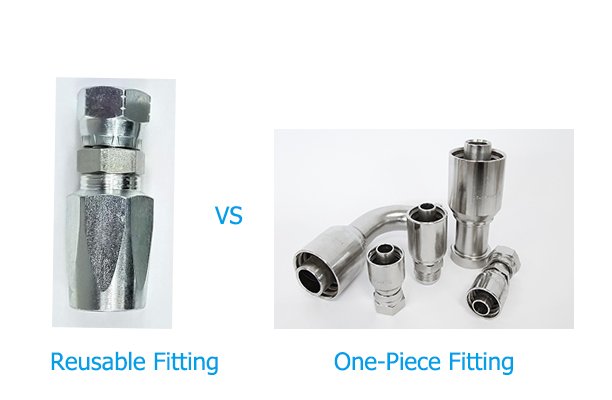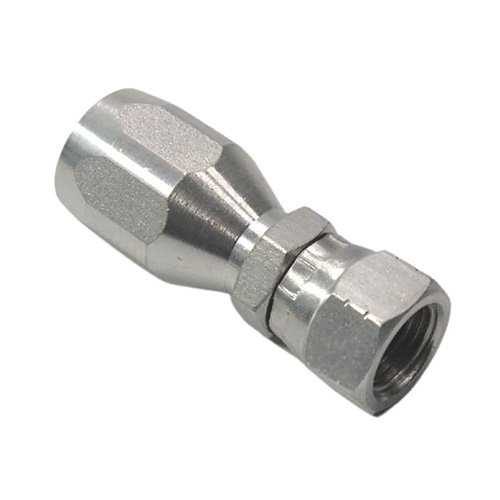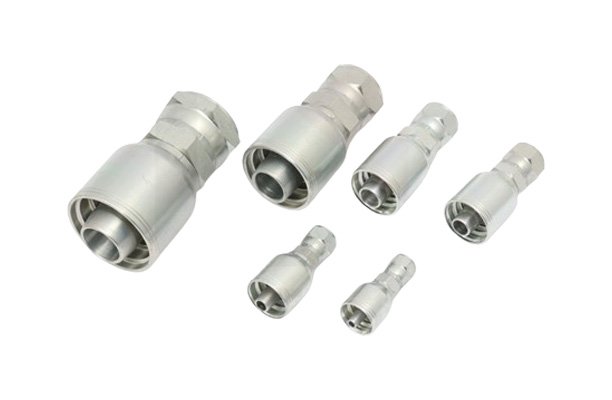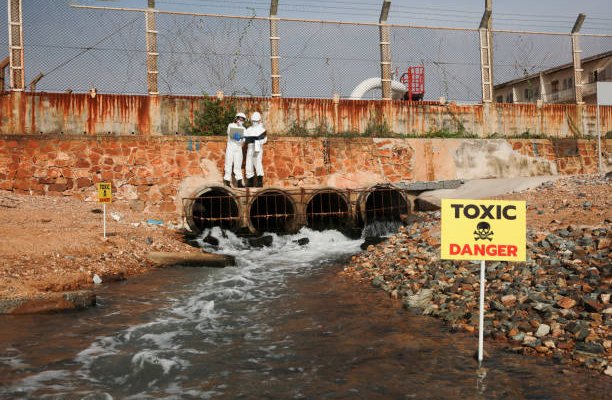1. Introduction
When choosing between Reusable vs One-Piece Fittings for your hydraulic system, the decision goes far beyond just cost or convenience. These fittings play a vital role in ensuring leak-free connections, pressure stability, and long-term reliability across a wide range of hydraulic applications. Whether you’re maintaining agricultural machinery, building OEM assemblies, or repairing industrial hoses, understanding the difference between these two fitting types is essential for performance, safety, and cost efficiency.
In this 2025 guide, we’ll explain the complete comparison between reusable and one-piece fittings — their designs, advantages, drawbacks, and best use cases — so you can make a confident and well-informed choice for your hydraulic system.
2. Understanding Hydraulic Fittings
Before comparing reusable vs one-piece fittings, it’s important to grasp what hydraulic fittings do and why they are so vital to any hydraulic circuit.
What Are Hydraulic Fittings?
Hydraulic fittings are connectors used to join hoses, tubes, and pipes within a hydraulic system. They ensure a leak-proof connection that can handle extremely high pressure while allowing for flexibility, routing, and maintenance.
They come in many designs and standards — such as JIC (Joint Industry Council), ORFS (O-Ring Face Seal), NPT (National Pipe Thread), BSP (British Standard Pipe) — depending on the type of system and country of use.
The Role of Fittings in Fluid Power Systems
In a hydraulic circuit, fittings serve three critical roles:
- Connection: They join multiple sections of hoses or tubes, allowing fluid to flow smoothly from one component to another.
- Sealing: They prevent leaks, which ensures that the system maintains consistent pressure.
- Adaptation: They allow different components (with varying thread types or sizes) to connect seamlessly.
Without high-quality fittings, even the most advanced hydraulic pump or actuator would be useless, as pressure loss and leakage can lead to inefficiency and dangerous system behavior.
3. What Are Reusable Fittings?
Now let’s dive deeper into the first type — reusable fittings, sometimes called field-attachable fittings.
Definition and Design
Reusable fittings are fittings that can be removed, cleaned, and reattached to new hoses without damaging the fitting or requiring specialized crimping tools. They usually come in two parts:
- Socket (outer shell): Screws onto the hose cover.
- Insert (nipple or stem): Pushes into the inner tube, creating a tight, secure seal.
Because they can be disassembled and reused multiple times, they are particularly valuable in field service operations where repairs must be made quickly and affordably.
Key Materials and Compatibility
Most reusable fittings are made from steel, brass, or stainless steel, depending on environmental and pressure requirements:
- Brass: Best for low-pressure systems or where corrosion resistance is important (like marine applications).
- Steel: Common in construction and heavy machinery, offering high strength at a lower cost.
- Stainless Steel: Used in high-corrosion environments such as oil & gas or chemical industries.
They are generally compatible with rubber hoses (SAE 100R1, R2, etc.) and sometimes with thermoplastic hoses depending on the design.
Advantages of Reusable Fittings
- Field repair capability: No crimping machine required — you only need hand tools.
- Cost efficiency: Great for systems that need frequent maintenance or hose replacements.
- Environmentally friendly: Reduced waste since fittings can be reused.
- Reduced downtime: Quick repairs minimize equipment stoppage.
Disadvantages
- Limited pressure handling: Not suitable for extreme pressures or OEM-grade hydraulic circuits.
- Bulkier size: They take up more space compared to one-piece fittings.
- Risk of improper installation: Manual assembly can lead to cross-threading or under-tightening.
Reusable fittings are ideal for technicians who frequently service mobile hydraulic systems — such as farm equipment, forklifts, and construction vehicles — where convenience and flexibility matter more than long-term permanence.
4. What Are One-Piece Fittings?
Definition and Structure
One-piece fittings, also known as permanent crimp fittings, are integrated hydraulic connectors designed for high-pressure, high-performance systems. Unlike reusable fittings, one-piece designs are pre-assembled units where the ferrule (sleeve) and stem are manufactured as a single, solid component.
This eliminates the need for manual assembly and ensures consistent crimp quality across all installations — a major reason why OEM manufacturers and industrial system designers prefer them.
The fitting is crimped directly onto the hose using a hydraulic crimping machine, forming a permanent connection that can withstand extreme pressure and vibration.
Manufacturing Process
One-piece fittings are made through precision machining and cold forming processes, often from carbon steel, stainless steel, or brass alloys. Many manufacturers add zinc or nickel plating for corrosion resistance and improved durability in harsh environments.
Each fitting undergoes pressure testing and dimensional verification to ensure leak-free performance.
Common Applications
One-piece fittings are the standard choice for:
- OEM hydraulic assemblies (automotive, aerospace, defense)
- Heavy-duty construction machinery
- Industrial automation and robotics
- Hydraulic presses and injection molding systems
In short, they’re perfect for high-volume production lines where uniformity, speed, and safety are priorities.
Advantages of One-Piece Fittings
- Leak-Free Reliability: Fewer components mean fewer potential leak points.
- Compact Design: The integrated form factor saves space, ideal for tight equipment layouts.
- High Pressure Handling: Superior sealing and crimp strength allow for extreme pressure ratings.
- Consistency: Automated crimping ensures repeatable, factory-quality results.
- Improved Flow Efficiency: Smooth internal surfaces reduce turbulence and pressure loss.
Disadvantages
- Non-Reusable: Once crimped, they cannot be removed or reused.
- Higher Upfront Cost: Requires investment in crimping machines and training.
- Limited Field Flexibility: Not suitable for quick, on-site repairs.
In essence, one-piece fittings are the go-to choice when you need maximum reliability and long-term performance — especially in critical applications where a leak could cause system failure or safety hazards.
5. Major Differences: Reusable vs One-Piece Fittings
While both fitting types serve the same purpose — creating secure, leak-free connections in hydraulic systems — their design, performance, and use cases differ dramatically.
Below is a comprehensive comparison:
| Feature | Reusable Fittings | One-Piece Fittings |
|---|---|---|
| Design Structure | Two-part (socket + insert) | Integrated single-piece design |
| Installation Method | Manual (field assembly with wrenches) | Requires hydraulic crimping machine |
| Reusability | Can be removed and reused | Single-use only |
| Pressure Rating | Moderate (up to ~3,000 PSI typical) | High (up to 10,000+ PSI) |
| Maintenance | Easy to replace or repair on-site | Replacement requires full re-crimp |
| Leak Resistance | Depends on assembly accuracy | Factory-level leak protection |
| Durability | Good for flexible systems | Excellent for heavy-duty or static systems |
| Cost Over Time | Lower initial cost, more frequent maintenance | Higher upfront cost, minimal maintenance |
| Skill Requirement | Can be installed by field technicians | Requires trained personnel and crimping tools |
| Ideal Applications | Agricultural, maintenance, mobile equipment | Industrial, OEM, aerospace, high-pressure systems |
Key Takeaway
If you prioritize convenience, reusability, and cost-effectiveness, reusable fittings are ideal. But if your system demands high pressure, vibration resistance, and permanent reliability, one-piece fittings are the better investment.
In short:
“Reusable fittings give flexibility. One-piece fittings deliver strength.”
6. When to Choose Reusable Fittings
1. Field Repairs and Mobile Maintenance
Reusable fittings shine in environments where equipment downtime must be minimized. For example, if a hydraulic hose bursts on a construction site or a farm tractor, having reusable fittings allows you to replace the damaged section without specialized equipment — saving hours of lost productivity.
Technicians can carry reusable fittings and basic tools to handle emergency hose repairs on-site, making them invaluable in remote or rugged areas.
2. Cost-Effective for Small Operations
For small businesses or low-volume users, investing in a crimping machine (required for one-piece fittings) might not be financially practical. Reusable fittings offer a low-cost alternative since they don’t need additional tools or machines.
They’re especially favored in:
- Repair shops
- Small farms
- Independent mechanics
- Field service teams
3. Eco-Friendly and Sustainable Choice
Reusable fittings support sustainability efforts by reducing material waste. Instead of discarding fittings with each hose change, users can simply reinstall them, promoting a circular maintenance model that minimizes scrap metal and environmental impact.
4. Flexibility in System Modifications
When working on prototype systems or frequently adjusted setups, reusable fittings are a practical solution. You can easily disassemble, reroute, or resize hose assemblies without the expense of new fittings.
5. Best for Low-to-Medium Pressure Systems
Reusable fittings are excellent for moderate-pressure hydraulic systems (below 3,000 PSI), such as those found in material handling equipment, hydraulic lifts, and agricultural sprayers.
However, for high-pressure, vibration-prone, or permanent installations, one-piece fittings remain the superior option.
7. When to Choose One-Piece Fittings
Choosing one-piece fittings is a strategic decision for hydraulic systems that demand the highest levels of safety, performance, and reliability. Let’s explore when and why these fittings are the best option.
1. High-Pressure and High-Vibration Applications
If your hydraulic system operates under extreme pressures (above 4,000 PSI) or experiences intense vibration or motion, one-piece fittings offer superior sealing strength. Their integrated, crimped construction ensures a permanent bond between the hose and the fitting, minimizing the risk of leaks or hose blow-offs.
These are commonly used in:
- Aerospace and defense systems
- Injection molding machinery
- Hydraulic presses
- Offshore drilling rigs
- Mining equipment
2. OEM and Industrial Manufacturing
In Original Equipment Manufacturer (OEM) environments, where product consistency and assembly speed are critical, one-piece fittings are the industry standard. Because they are pre-assembled, technicians don’t have to manually align or torque individual components — the result is a faster, cleaner, and safer assembly process.
Manufacturers favor one-piece fittings because:
- They reduce assembly time by up to 30%
- Ensure uniform crimp quality
- Minimize human error in production
- Meet stringent ISO and SAE standards
3. Safety and Reliability Are Non-Negotiable
For systems where failure could cause injury, loss, or significant downtime, one-piece fittings are the only responsible choice. Their leak-proof design not only reduces the risk of hydraulic fluid spills (a major environmental hazard) but also enhances system integrity in mission-critical applications.
Examples include:
- Aircraft hydraulic controls
- Power steering systems
- Heavy-duty hydraulic brakes
- High-performance industrial tools
4. When Space and Weight Matter
One-piece fittings are more compact and lighter than reusable ones, making them ideal for equipment with limited space or where weight reduction improves performance — like in aerospace or racing vehicles.
Their streamlined form also reduces potential snagging points and improves fluid flow efficiency, minimizing pressure drops inside the hose.
8. Installation Tips for Both Fitting Types
Proper installation determines whether your fittings will deliver leak-free, long-lasting performance or cause premature failures. Regardless of whether you’re using reusable or one-piece fittings, attention to detail during installation is crucial.
Installation Tips for Reusable Fittings
- Inspect Hose Ends: Ensure the hose is clean, dry, and free from debris.
- Cut Cleanly: Use a hose saw (not a hacksaw) for a straight, smooth cut that prevents leaks.
- Lubricate Threads Lightly: Apply a small amount of compatible oil to the threads to ease assembly.
- Insert and Thread Properly: Push the insert until it bottoms out, then thread the socket carefully to avoid cross-threading.
- Torque Correctly: Use a torque wrench to tighten according to the manufacturer’s specification — overtightening may damage the hose reinforcement.
- Pressure Test: Always test the assembly at working pressure before returning the equipment to service.
Installation Tips for One-Piece Fittings
- Select the Correct Hose Type: Ensure compatibility between the fitting and hose manufacturer’s recommendations (SAE, ISO, or EN standards).
- Use Calibrated Crimping Equipment: Incorrect crimp dimensions can lead to leaks or hose slippage.
- Follow Crimp Specifications: Each fitting style has a specific crimp diameter tolerance — adhere strictly to the spec sheet.
- Inspect Crimp Quality: Check for smooth transitions and even crimp marks around the ferrule.
- Avoid Contamination: Keep the assembly area clean to prevent dirt or debris from entering the hydraulic system.
- Label and Record: Document the fitting batch, hose type, and crimp settings for traceability and quality control.
Post-Installation Checks
- Perform a hydrostatic pressure test (typically 1.5x working pressure).
- Check for leaks, bulges, or twisting in the hose.
- Rotate fittings gently to ensure proper alignment and stress-free installation.
Proper installation not only enhances performance but also extends the service life of both the hose and fitting — often saving hundreds of dollars in replacement costs over time.
9. Common Mistakes to Avoid When Choosing Fittings
Even experienced technicians and engineers can make errors when selecting or installing hydraulic fittings. These mistakes can compromise system performance, create safety hazards, and lead to premature wear.
Here are the most frequent pitfalls — and how to avoid them:
1. Ignoring Pressure and Temperature Ratings
Each fitting and hose has a maximum working pressure and temperature limit. Using a reusable fitting in a high-pressure environment (where a one-piece fitting is required) can lead to catastrophic failure. Always check manufacturer data sheets before selection.
2. Mixing Different Material Types
Combining steel and brass fittings, for example, can cause galvanic corrosion, leading to leaks and thread degradation. Use fittings and adapters made of the same or compatible materials to ensure longevity and corrosion resistance.
3. Overlooking Hose Compatibility
Not all hoses are designed for all fitting types. Using a one-piece fitting with an incompatible hose (wrong outer diameter or reinforcement layer) may result in improper crimping or slippage. Match the hose type, size, and fitting design precisely.
4. Over-Tightening Threads
One of the most common mistakes is over-tightening, which damages the sealing surface, distorts threads, or cracks the fitting. Always use a torque wrench to ensure the correct tightness according to manufacturer specs.
5. Neglecting Regular Inspection
Even the most robust fittings can loosen or degrade over time. Failing to inspect connections periodically can lead to leakage, contamination, or hose detachment. Set up a maintenance schedule that includes fitting inspection and torque checks.
6. Choosing Fittings Based Solely on Price
Cheap fittings might save a few dollars initially but can lead to costly downtime and repairs later. Always prioritize quality, certification, and compatibility over cost when purchasing hydraulic components.
7. Failing to Clean Before Assembly
Hydraulic systems are extremely sensitive to contamination. Even small particles can damage valves or pumps. Always clean fittings, hoses, and tools before assembly and seal open ends during installation.
10. Expert Insights: What Industry Professionals Recommend
When it comes to choosing between reusable and one-piece fittings, industry experts and engineers emphasize one key principle:
“Choose based on the application environment — not just convenience.”
To better understand the decision-making process, let’s examine insights from professionals across different sectors.
Hydraulic System Designers
According to Parker Hannifin and Eaton Hydraulics, the two global leaders in hydraulic components, the majority of OEM assemblies now use one-piece fittings because of their reliability, consistent crimp quality, and simplified inventory management.
- Why: One-piece fittings require fewer components to stock and assemble.
- Result: Fewer part numbers, reduced error rates, and improved system integrity.
As Eaton’s technical bulletin puts it:
“A single-piece fitting eliminates misassembly errors while ensuring repeatable crimp performance in production lines.”
Maintenance and Field Technicians
On the other hand, professionals working in field maintenance and mobile hydraulic repair overwhelmingly prefer reusable fittings. Their ability to perform quick repairs without special equipment is a game-changer in remote or time-sensitive operations.
- Why: Reusable fittings can be assembled with just hand tools, even in field conditions.
- Result: Reduced downtime and lower repair costs.
A seasoned agricultural technician explains:
“Reusable fittings are my go-to for tractors and sprayers. When a hose bursts, I can have it fixed in minutes — no crimper, no delays.”
Industrial Safety Experts
Experts in hydraulic safety caution that for systems handling hazardous fluids or high pressures, safety must outweigh convenience.
Reusable fittings, while practical, can’t match the sealing integrity of one-piece designs in these conditions.
Safety Recommendation:
“If your system operates in a high-pressure, vibration-intensive, or critical safety environment — always use one-piece fittings.”
Environmental Considerations
From a sustainability perspective, reusable fittings have an edge. Since they can be reassembled multiple times, they help reduce metal waste and contribute to eco-friendly maintenance practices.
Forward-thinking companies are now blending both approaches: using reusable fittings for serviceability and one-piece fittings for system reliability — achieving an ideal balance between sustainability and safety.
11. Comparative Table: Reusable vs One-Piece Fittings
Here’s a detailed side-by-side comparison summarizing all critical factors, from cost to performance, to help you choose the right fitting for your needs.
| Criteria | Reusable Fittings | One-Piece Fittings |
|---|---|---|
| Structure | Two-part assembly (socket + insert) | Integrated, pre-crimped design |
| Installation Tools | Basic wrenches | Hydraulic crimping machine |
| Ease of Assembly | Easy, field-friendly | Requires skilled technician |
| Reusability | Yes — can be reinstalled | No — single-use only |
| Initial Cost | Low to moderate | Higher upfront cost |
| Long-Term Cost | Higher (due to reassembly labor) | Lower (minimal maintenance) |
| Pressure Rating | Moderate (1,500–3,000 PSI) | High (up to 10,000+ PSI) |
| Leak Resistance | Good (depends on skill) | Excellent (factory-quality seal) |
| Maintenance Frequency | Higher — periodic checks needed | Minimal — designed for longevity |
| Vibration Resistance | Moderate | Excellent |
| Environmental Impact | Lower waste, reusable | Non-reusable but recyclable |
| Applications | Field repairs, mobile equipment | OEM, industrial, aerospace |
| Safety Level | Medium | Very high |
| Weight and Size | Bulkier and heavier | Compact and lightweight |
| Recommended For | Flexibility and repair convenience | Performance and safety-critical systems |
Quick Decision Summary
- Choose Reusable Fittings if your top priorities are cost-effectiveness, flexibility, and easy maintenance.
- Choose One-Piece Fittings if your priorities are safety, high-pressure tolerance, and professional-grade reliability.
FAQs
1. Can I use reusable and one-piece fittings in the same hydraulic system?
Yes, you can — but only if they meet the same pressure ratings and fluid compatibility standards. It’s common in mixed systems where permanent connections use one-piece fittings, while serviceable lines use reusable ones.
2. How many times can a reusable fitting be reused?
That depends on the manufacturer and the operating conditions, but generally 3–5 reuses are considered safe if the fitting remains undamaged. Always inspect for thread wear, corrosion, or deformation before reuse.
3. Are one-piece fittings always better?
Not necessarily. They are more reliable and durable, but less flexible for maintenance. For example, in agricultural or mobile repair applications, reusable fittings often provide more practical benefits.
4. Do I need a crimping machine for reusable fittings?
No. That’s one of their main advantages. You can assemble reusable fittings using standard wrenches and follow the manufacturer’s assembly instructions.
5. Can I repair a one-piece fitting once it’s crimped?
No. Once a one-piece fitting is crimped onto a hose, it becomes a permanent connection. If it’s damaged, the entire hose assembly must be replaced.
6. Which fitting type provides better sealing performance
One-piece fittings provide better sealing performance because the integrated sleeve and stem eliminate gaps or potential misalignment. They are the top choice for leak-sensitive or safety-critical systems.






